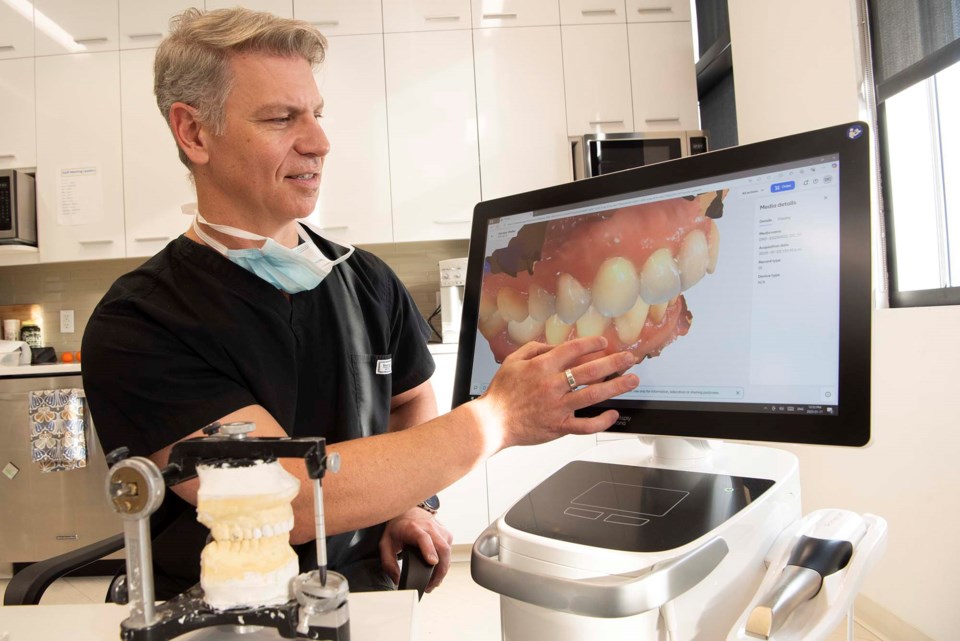A St. Albert dentist is working to speed up dentistry using AI and 3D printing.
Colin Diener, owner of St. Albert’s Nuvo Dental and an associate professor of restorative dentistry at the University of Alberta, spoke with the Gazette this month on his work to speed up all-on-X dental surgeries.
Diener said he and his team have worked for the last 1.5 years on a quicker way to install all-on-X dental implants, which are implants that replace an entire set of upper or lower teeth. The process involves 3D printing, 3D imaging, and an AI-powered anesthetic pump.
Traditionally, dentists would create implants by taking a cast of a patient’s teeth and use a complicated vice called an articulator to figure out how the new teeth should fit together.
“The problem with these devices is they don’t overlay the face,” Diener said, which is an issue, as teeth should align with the eyes and other facial features. This results in less accuracy, more adjustments, and more visits to the dentist.
Diener said dentists have recently started using scanners to create computer models of a patient’s face and teeth, allowing them to design implants and plan surgeries virtually with extreme accuracy. 3D printers also now allow implants to be printed on-site within minutes, instead of having to wait several hours for an expert to mill them off site.
It was the third technology — the AI-powered pumps — that Diener said got his team thinking about coming up with a new way to make these implants.
Targeted controlled infusion pumps are commonly used in dentistry outside of North America, said Hollis Lai, a U of A dentistry professor who has studied the devices. Instead of having a person manually inject a patient with sedatives, these pumps use artificial intelligence to continuously adjust the amount of sedative going into a patient based on their vital signs, resulting in a faster recovery.
The pump cuts the recovery time from sedation down from hours to minutes, Diener said.
“You push ‘stop’ on this infusion pump … [and] you’re awake within minutes.”
Diener said he and his team were now working on a protocol for how to use these technologies in all-on-X procedures. If the protocol works, they hope to cut the time needed for those operations to about four hours from around eight.
“It’s an exhausting procedure to do conventionally,” he said, and it speeding it up would make life easier for patients and dentists.
Diener said he believed his team was the first in Canada to try and combine these three technologies together this way, in part because there weren’t many private dental offices in the country that could do anaesthesia. His team hoped to have the protocol figured out by this fall — that’s when Health Canada is expected to approve the super-accurate scanner they need for the protocol to work. He hoped to start teaching his students about the protocol later this year.
Diener predicted that all three of these technologies would become commonplace in dentistry in about a decade.
“This is technology that is the future.”



